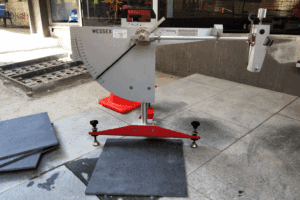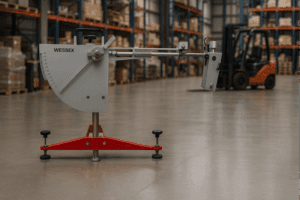Retail Floors: The High-Risk Zones You’re Overlooking
Retail floors may look clean—but that doesn’t mean they’re compliant. Entry tiles, produce aisles, and checkouts are among the most common fail zones under AS 4663-2013. If you’re relying on visual checks or install-time data, your surface might not meet HB198-2014 requirements. This article explains where to test, what to check for, and how to stay defensible.
Retail spaces may look spotless—but that doesn’t mean they’re safe. Some of the most polished, professionally cleaned floors we’ve tested have returned borderline or failing slip resistance results.
Why? Because appearance doesn’t equal performance—and retail brings its own set of risks.
Where the Danger Lies
High-risk retail zones include:
- Entry tiles — water, umbrellas, shopping trolleys and foot traffic
- Produce aisles — misting systems, spills, condensation
- Checkouts — polished vinyl, heavy footfall
- Back corridors — detergents, sealed surfaces, trolley traffic
What’s Required—Not Just Recommended
Under HB198-2014, these areas must meet minimum slip resistance classifications based on real-world usage:
Table 3B — Wet Pendulum Classifications for Internal Locations
| Location | Minimum Pendulum Class |
|---|---|
| Entry foyers, hotel lobbies (when wet) | P3 |
| Shopping centre common areas (when wet) | P3 |
| Supermarket aisles | P3 |
| Supermarket produce areas | P4 |
| Fast food outlet dining areas | P3 |
| Swimming pool surrounds | P4 |
| Communal changing rooms | P4 |
| Toilet facilities in offices, shopping centres, hotels etc. | P3 |
| Undercover carparks | P3 |
| Aged care facilities (dry) | P2 |
| Hospital and aged care (bathrooms, ensuites, WCs) | P3 |
| Commercial kitchens | P5 |
| Cold storage rooms | P4 |
| Serving areas behind bars | P5 |
Table 3B — Wet Pendulum Classifications for External Locations
| Location | Minimum Pendulum Class |
|---|---|
| External ramps (including sloping driveways steeper than 1:14) | P5 |
| External walkways, external balcony surfaces, carpark areas | P4 |
| External stair treads | P4 |
| External entries with cover over | P4 |
| External entries uncovered or subject to wind-driven rain | P5 |
| Pedestrian crossing points (e.g. footpaths intersecting driveways) | P5 |
| Footpaths and outdoor walkways | P4 |
Source: Adapted from HB198-2014 – Guide to the Specification and Testing of Slip Resistance of Pedestrian Surfaces
Are You Testing to the Right Level?
It’s not enough to test once at install—or rely on manufacturer data alone. Real-world performance varies with:
- Surface wear
- Coatings or polish
- Cleaning chemicals
- Cleaning regimes
- Foot traffic patterns
What to Do
- Test entry and produce zones frequently
- Recheck any surface after sealing, resurfacing, or finish changes
- Use AS 4663-2013 in-situ testing for accurate, real-world performance
- Review all results against Table 3A/3B to determine compliance
- Engage a NATA certified auditor.
Zerofal provides independent, NATA-traceable testing across all high-traffic areas. Want to know if your site’s still compliant?
Book a test or request a compliance review today
Not Sure If Your Retail Site Still Complies?
Zerofal tests retail entries, produce aisles, corridors, and other high-risk floor zones under AS 4663:2013.
Get clear, certified results and practical advice—before a slip becomes a claim.
Explore more

Colour, Grit and Surface Finish: How Subtle Differences Change Slip Ratings (AS 4586:2013)
Colour, grit and finish change slip resistance. Learn why P-ratings vary across tile ranges and coatings

Why One Slip Test Isn’t Enough for Product Lines (AS 4586:2013)
Slip resistance varies across colours and finishes. Learn why one AS 4586 test cannot certify an entire product line.

Industrial Slip Resistance: Dust, Boots & Coating Drift (AS 4663:2013)
: Industrial floors change fast. Learn how dust, coatings and machinery reduce slip resistance and why AS 4663 onsite testing is essential.
Stay Ahead of Safety Standards
Join the Zerofal newsletter for actionable insights on slip testing, compliance updates, and smart prevention strategies. No spam – just practical safety advice.
